Brand Canon
Lens Type Standard
Compatible Mountings Canon EF
Camera Lens Description 50 millimetres
Maximum Focal Length 50 Millimeters
About this item
- 50 millimeter focal length and maximum aperture of f/1.8
- Great for portraits, action, and nighttime photography; Angle of view (horizontal, vertical, diagonal): 40º, 27º,46º
- Minimum focusing distance of 1.15 feet (0.35 meter) and a maximum magnification of 0.21x
- Stepping motor (STM) delivers near silent, continuous move Servo AF for movies and smooth AF for stills
- 80 millimetre effective focal length on APS C cameras, 50 millimetre on full frame cameras. Lens construction: 6 elements in 5 groups



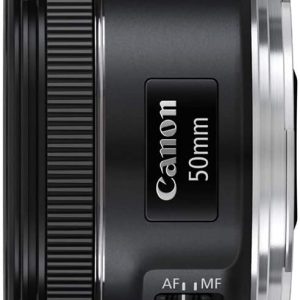
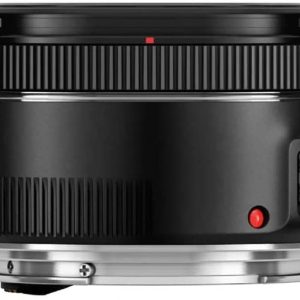
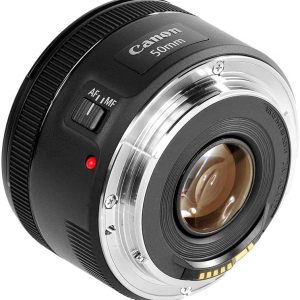

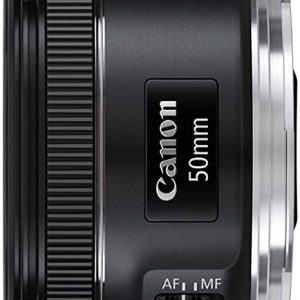
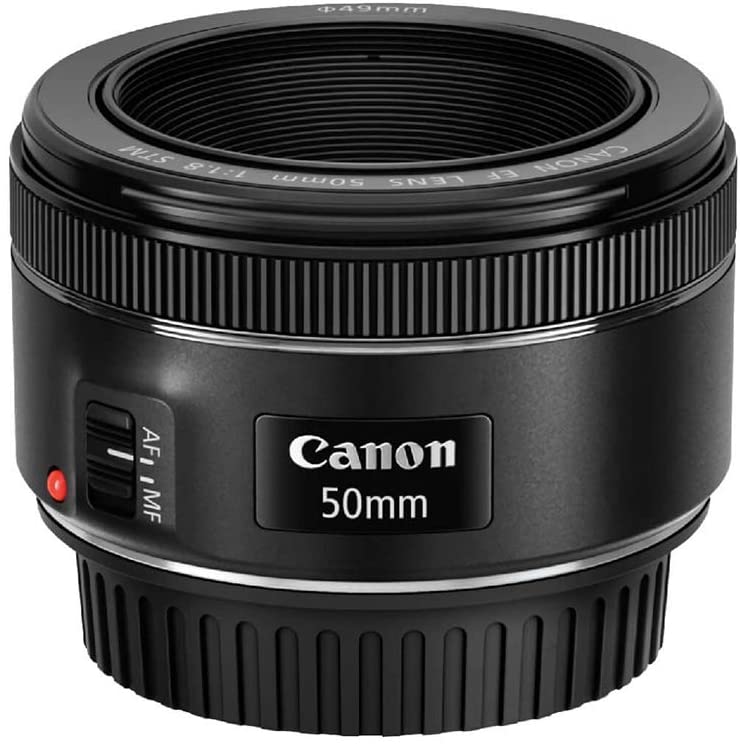
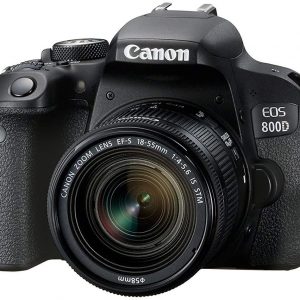
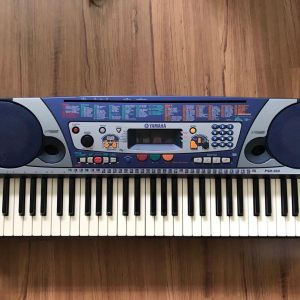
admin –
5.0 out of 5 stars Possibly the best value in all of photography
Reviewed in the United States on August 16, 2019
Style: 50 mm LensVerified Purchase
Ah, the “nifty fifty”! This is without question the best-selling lens from Canon, maybe even of all lenses. Its high price to performance ratio is the reason for this. It can be useful on both crop and full frame, and should probably be every beginners first upgrade lens, which I will discuss more in the review. As with all WOFG reviews, I will cover the pros and cons, offer advice for how to use the lens, and give some suggestions at the end.
Let’s pro/con this thing!
Pros
1. Price – Right at the top of the list is the price, typically 125 USD, though sometimes it can be had new for as little as 100. There are few lenses in this price range that can perform at the level this lens can. Most come with large compromises; lack of or poor auto focus, increased aberrations or fringing, soft when wide open, terrible build quality, etc. The Canon F1.8 STM has minimal compromises. This is not to say there aren’t better lenses, just none in this price class. The closest is probably the Yongnuo 50mm F1.8, which is a cheaper lens (about 50 USD). Realistically though, the Canon outperforms it by enough to be worth the additional 50 dollars or so that it cost. AF performance alone makes it a better choice; the Yongnuo is spotty at best for AF.
2. Image quality –Sharp lens, even when wide open it stays fairly sharp (wide open meaning when shooting at F1.8). Colors and contrast look good. If you are using an APS-C/crop camera like one of the Rebel series, you will see a clear difference in image quality with this lens over the 18-55mm lens that likely came with your camera. Full frame users, I personally feel like the F1.8 is a more practical option than the 50mm F1.4 USM, which I will breakdown later in the review as to why. The very good IQ combined with the low price is the reason I suggest this lens more than any other lens as the first upgrade to your camera. I cannot stress enough the value this lens has for either crop users or full frame users. Possibly the best value in all of photography.
3. STM focus for video – If you are not familiar with the Canon STM focus, it is a silent focusing system made for video. It is also good for still photos as well, but depending on what you are doing it might be a little slow (see cons). In any case, when I put it to the test on an 80D and a 5DmkIV, it was very quiet in video; no sound could be heard as the lens focused. Note – Not all Canon cameras support the silent focus feature of STM. Any model older than the T4i does not support it. Also, the base models do not support it, even the latest versions (T5, T6, T7, or older). The lens can still use AF; it just might not be silent. One other note, STM requires power to be supplied to focus, even in manual. So keep that in mind if you plan to use accessories like extension tubes or other adaptors. Not all of them supply power to the lens.
4. Great focal length – On a full frame camera 50mm is what you might call the most “classic” of focal lengths. Very useful for general photography as well as portraits that have a bit of context to them (meaning more of the surroundings are in the photo). It is also the most popular focal length for street photography (though I admit I don’t really get into that). On an APS-C camera it takes on a more specific role. The crop factor narrows this to 80mm equivalent focal length, which is just about perfect for portraits that have that classic “isolated” look. Think in terms of 8×10 portraits on the wall, or even senior portraits. Combined with the F1.8 aperture I would say it is the best choice for portraits on any APS-C camera for shooters on a budget. It will make similar photos on a crop camera as an 85mm will do on a full frame. A note on 85mm lenses – you have probably heard that 85mm is the best portrait lens. This however considers that you are using a full frame camera, where it is one of the most popular choices for portrait work. On a crop camera the 85mm lens is not as ideal for this purpose. One of two things will happen. You will have to frame everything too tightly (mostly headshots and bust ups), or you will have to move further away to correctly frame your subject. The added distance from you to your subject robs the 85mm of all the things that make it special for portraits when used on a crop (background blur). It isn’t just about being able to shoot at 85mm, it’s being able to do it from the distance it takes to frame a classic portrait, while shooting with a wide aperture to gain the background blur that it creates from that distance, while still having enough depth to keep the main subject in sharp focus. Moving further away decreases your compression and also loses detail. For the classic look you want to be close, and the 50mm gives you that on a crop sensor camera so much more than an 85mm will. This is why I recommend the 50mm focal length for portraits if you have a crop sensor/APS-C camera. It is much more about the distance to your subject with portraits, and knowing the length that works best for that based on your sensor size will take you quite far.
5. Fast aperture – For those that have only used the lens that came with your camera, this right here is the main reason I think you should get this lens (other than price). The F1.8 aperture is pretty fast for a lens, offering not only a significant increase in light throughput but also will create the coveted bokeh effect for portraits as described previously. If you’ve not experienced what a wide aperture can do, this is one of the least expensive ways to do it, and fortunately it’s also a good one!
6. Compatible with all EOS cameras – I am adding this here mostly for people’s info, since I frequently see people asking about “will this fit on my camera?” This lens is EF, so that means that it will work on all of Canon’s EOS cameras. That is the full frame models; 1D, 5D, and 6D. The crop sensor/APS-C models; all the Rebels, the mid-range models from the 10D to the 80D, and the 7D. It is also able to be used on the mirrorless cameras as long as you have the adaptor for EF lenses. It will even work on older film EOS cameras, going back to the very first ones released in 1987!
7. Good minimum focus distance – At just over a foot, this lens can be pretty close to a subject and still focus. I find that on crop sensor cameras that makes it pretty good for close up work. Not as good as a true macro or even the EF-S 24mm F2.8 STM, but still pretty good. Add an extension tube and you have a budget macro setup! (I suggest Kenko Extension Tubes)
8. Other stuff – 49mm filter thread means cheap filters if you are into that. Not a common size, so it might be better to use a step down ring with a larger filter. Metal lens mount. Full time manual focus override (you have to “wake” the camera by half pressing the shutter button before turning the focus ring). Overall improved over the older model, the EF 50mm F1.8 II (see comparison later). Very lightweight, especially when compared to other fast 50mm primes.
Cons. Most of this is for your information and is not worth the removal of a star. I will say why if I remove a star for any reason. Otherwise it is up to the user to know what they are getting and how to use it.
1. Not ideal wide open (F1.8) – Even though it is better wide open than the older F1.4 model, it still suffers from a slight loss in clarity when shooting at F1.8. Not a big deal since most shots will need stopped down a little to increase depth of field anyway (meaning shooting at a narrower aperture). I shoot at F2-F2.8 a lot for portraits, and appreciate the increase in sharpness without losing too much exposure or background blur. I think this is more noticeable on a full frame camera than a crop, since it’s around the outer edges where it is the worse (A crop camera doesn’t really see the outer edges of this lens). The center sharpness is still pretty good at F1.8. I didn’t notice any serious chromatic aberration issues either, but then I don’t use the lens in strong backlight scenarios where those problems become the most pronounced. I haven’t heard from others that it is a problem, whereas on the F1.4 model it is. (See comparison for more info)
2. A bit soft in the corners – As to be expected on a lens like this, it loses clarity around the outer edges of the frame. This is most noticeable at F1.8, and is more pronounced on a full frame camera than it is on a crop camera. Once you stop down to even F2 you see an improvement, though it really never becomes as sharp on the edges as it is in the center at wider apertures. I don’t see this as a deal breaker though. This would be the biggest difference in image quality when comparing it to lenses like the EF 50mm F1.2, or the Sigma 50mm F1.4, both lenses known for their high level of optical performance. But those lenses are significantly more expensive. The Sigma is 950 USD, and the Canon is 1400! You get the “nifty 50” because the compromises vs price are just worth it, at least until you know if you want to invest more into a higher quality lens.
3. Focus by Wire – Since this is an STM lens, there is no mechanical connection to the focusing gears. What this means is that as you turn the focus ring, instead of that tuning the focus, the camera is sent an electronic signal to tune it instead; it’s not as precise as mechanical focus. I don’t use manual focus on this lens so for me it’s not that big a deal. If you do a lot of manual focus, you might prefer the F1.4 model. Again, focus by wire doesn’t bother me, but I do not know even one photographer that prefers it over mechanical.
4. No IS – Does not feature image stabilization. This is really only an issue when you want to shoot at shutter speeds slower than 1/50 sec (1/80 on crop). Since this lens has such a fast aperture there are not a lot of times that is going to be an issue. It makes it less ideal for vlogging though, but the focal length already makes it not ideal for that (vlogging is done from wider angles than this). For me this really didn’t matter since there was no scenario where I would be using this lens that having IS would be a benefit. But if someone wants a 50mm lens with IS, then this isn’t it. Canon doesn’t make one, and I don’t know of any third party 50mm lenses that have it either. Even so, adding IS tends to cause a slight loss in overall sharpness due to the floating element that performs the stabilizing, a definite increase in price, and probably a loss in overall max aperture. So I don’t think I would even want it on a lens like this, since the price, fast aperture, and IQ are the main reasons I am suggesting it.
5. Other stuff – No hood is included; I suggest Promaster for hoods (cheaper than Canon and work just as well). For the price of the lens I really didn’t expect a hood. Hood is reversible but covers the entire outside of the lens, making it a bit larger in diameter. Mostly plastic design with a metal mount. Not fragile by any means, the casing still feels solid. No weather or dust sealing. STM focus isn’t as quick as USM, so it’s not really ideal for sports, but not impossible either (shoot in continuous focus mode for sports).
I really don’t have anything negative to say about this lens that isn’t also washed by its price. Just a great value for the performance you get from it.
Conclusions
What a great little lens! It’s so good no matter what kind of Canon you have. I have used it on anything from the entry level SL2 to the professional 5DmkIV. Always gives me good images. Sometimes I switch between the Canon F1.8 and the Sigma 50mm F1.4, and there are times when I am going through the photos and I have to check which lens took what shot. It compares pretty well. In the end the Sigma outperforms it in overall image quality, but as I said before that lens is very expensive. I am a pretty serious shooter these days, and sometimes I even get paid for my work. So I can justify the more expensive Sigma lens. But I cut my teeth on the Canon F1.8 to get to that point. If you are someone that is looking to get more serious, or even just wants to improve over the quality of your kit lens, the 50mm F1.8 is probably the best way to go without having to break your budget. Anyone could afford it, and you will see an immediate improvement in image quality. Just know how to use it to its best purpose on your camera as described earlier in the review. I see no reason someone couldn’t use this lens to eventually move into higher levels of shooting, or just keep using it if it does all you need.
Compared to the Canon EF 50mm F1.8 II – You may have seen this lens around for about the same price as the STM model. I really don’t suggest this lens. It’s the previous version of the “nifty 50” and is outclassed by the STM model in all ways. If you already have it then it probably works well enough. For about the same price I would take the STM model every time. I won’t even bother with a breakdown since the older model has no advantage over the new one; the STM model is the clear choice. Even if you can get the F1.8 II cheaper, the STM model is so inexpensive that I can’t see it being worth saving a few bucks. This is also why I don’t recommend the Yongnuo 50mm F1.8. You can get it as cheap as 45 USD, but you really get what you pay for. If it’s all you can afford then I would think you can make it work, but 100 USD probably isn’t out of reach for anyone that has already spent 400 or more dollars on a camera.
Compared to the Canon EF 50mm F1.4 – This is the real battle here. The F1.4 model is a lens people also like, since it is fairly inexpensive for its class (about 300 USD). Side by side, it does have the advantage of the F1.4 aperture, which is 2/3rds stops more than the F1.8 (theoretically 66% more light, though reality is probably more like 33%). What this does is lets you shoot at faster shutter speeds or lower ISO, and also gives a shallower depth of field (DOF), but there are some compromises here. For one, the F1.4 has known soft focus and chromatic aberrations when shot wide open. To avoid these issues, you have to stop down to about F2-F2.8. So really, you don’t get more from the F1.4, since the F1.8 STM is still fairly sharp wide open and without aberrations, and is technically sharper at F2-F2.8 than the F1.4 lens (in testing that is, in the real world there is no obvious difference). For the difference in price, I just don’t see the “advantage” of F1.4 being enough to be worth almost 200 USD in additional cost. However, some people actually like the soft focus look of the F1.4 model, which is something you can’t get from the F1.8 STM without using some kind of software, filter, or other method (I’ve seen chapstick used on a UV filter to do this, LOL). So if you want that, then the 50m F1.4 isn’t a bad choice and is also fairly inexpensive. If you are just looking to add a better lens to your kit for a low cost, then there is no practical advantage the F1.4 has over the F1.8 for the money. I don’t think there is any situation where the additional light or shallow DOF will make a mind blowing difference, and for good quality images you will be shooting at about the same settings anyway. The F1.4 model is just a really old lens (released in 1993), and has never been updated. The F1.8 is much newer and has more recent engineering and lens coatings that make the 50mm F1.4 almost obsolete. I can’t think of one time that I suggested it over the STM model. I do like it more than the 50mm F1.8 II model. From a practical point of view, the EF 50mm F1.8 STM is Canon’s best budget 50mm lens. If you already have the 50mm F1.4 then just keep using it, it is also a good lens as long as you know how to make it work. If you don’t have either, save some money and get the F1.8 STM model instead and put the money into another lens!
Other Suggestions – It wouldn’t be a WOFG review without suggestions! I’m going to do this a little differently since really there is no other lens I suggest for a 50mm that is in this price class, for crop or full frame. Instead, I am going to list my “4 lenses to buy first for Canon APS-C/crop cameras”, to help people acquire a more diverse kit of lenses. The list is only good for crop users though, as the 50mm F1.8 is the only one that can mount to a full frame. I really don’t have such a list for full frame users, but I do have a couple suggestions for other lenses that might be useful to full frame shooters on a budget.
For crop users – I’m just going to post the whole list, including the 50mm, and the reasons I suggest each lens.
1. EF 50mm F1.8 STM – The lens under review. Great for portraits on a crop camera. No other lens with this quality, speed, or sharpness is available at this price. The review should be pretty clear as to why.
2. EF-S 55-250mm F4-5.6 IS STM – Best telephoto for less than a grand. Beats the 75-300mm in all categories except overall reach. Can be bundled with new cameras for about 200 USD, or found used/refurbished/white box “bulk packaging” for about 150.
3. EF-S 10-18mm F4.5-5.6 IS STM – For landscapes, architecture, large equipment, or whatever needs a wide angle. Good for video too, especially vlogging, not only thanks to the wide angle but also the IS (one of the only wide lenses Canon makes with that feature).
4. EF-S 24mm F2.8 STM – Adds F2.8 to your shooting for a low price (130-150 USD). This makes it possible to shoot at faster shutter speeds than the kit lens can, making it better for moving subjects. Nice that it has a wider angle than the 50mm F1.8, so it’s more versatile for framing.
Each of these lenses adds something different to your kit, is highly rated, and is affordable (under 300 per lens). If you are a beginner and looking to expand what you can do, this setup adds a lot of diversity to your kit. Always invest in lenses before getting a new camera! If interested in more info on these lenses, just go to my profile and find my reviews of them. Simply click on my name and then scroll until you find the review.
For Full Frame
1. EF 40mm F2.8 STM – Not as fast as the 50mm, but a little bit wider angle, and a lot more compact. Easy to shove into a pocket or purse when you are out and about. Just a nice lens, for about 150-180 USD.
2. EF 24-105mm F4L IS II USM – This is actually a pretty expensive lens, but for those that want one lens that can do the work of a couple lenses this is it. At 105mm you can get pretty good compression, making up for the lack of a wider aperture, so in some ways it can take the place of a portrait lens if you just want to shoot your kids or other family members. Its 24mm wide angle makes it great for most general shooting. It’s basically the kit lens for full frame Canon’s. There are a couple versions, the latest is the best (IS II), but the older model is cheaper and isn’t too bad. Sigma makes one that is nice and is much sharper than the Canon models, but has sketchy AF. Probably fine for most users.
I really only list these since I know they are good lenses that people like to use. I still suggest the 50mm F1.8 to all full frame users. I keep mine in spite of having much more expensive lenses, so that I can use it at times that I might be afraid to risk my Sigma or my 24-70mm lens, since I could pretty much throw away my 50mm F1.8 and get a new one. But these other lenses are pretty useful too, and I think someone that can’t really afford a lot of lenses can benefit from them.
That is all I got, all that is left is to check out the images. Thanks for reading my review! If you liked this review, be sure to check out my profile for more reviews on other camera gear, and if you found this helpful please remember to click that helpful button. Thanks again!